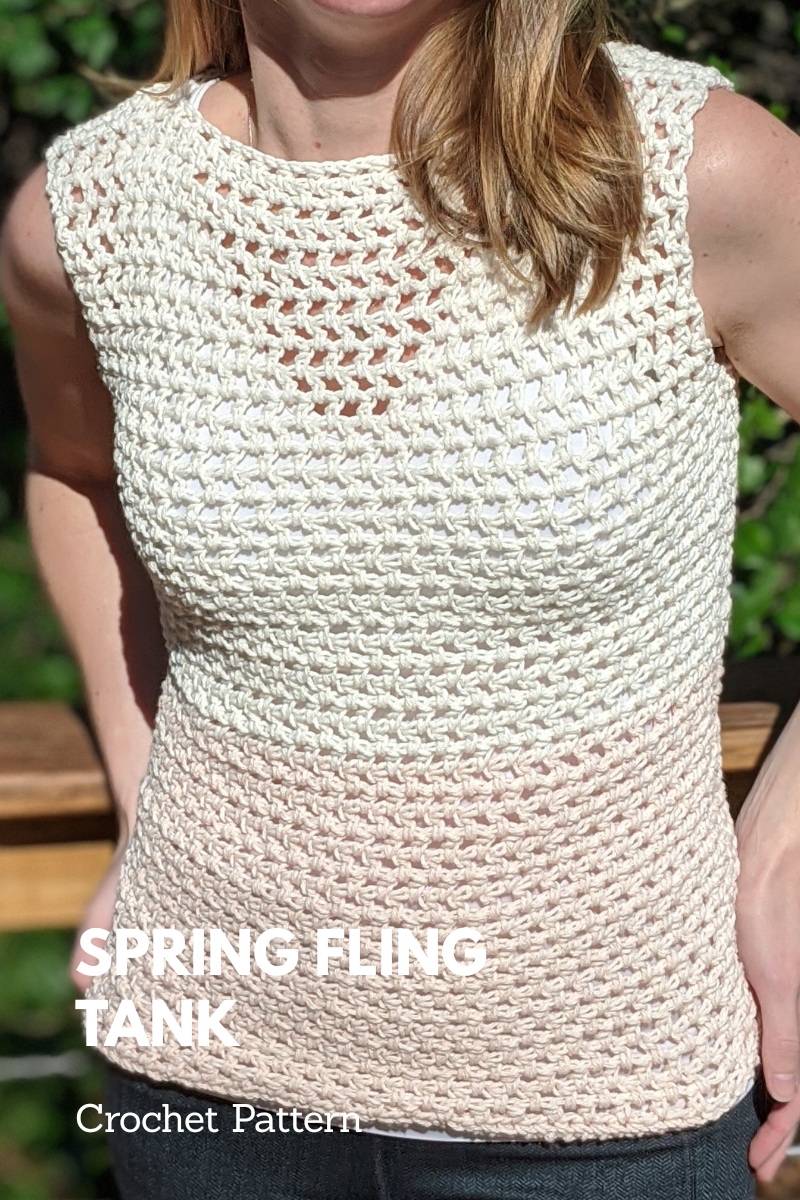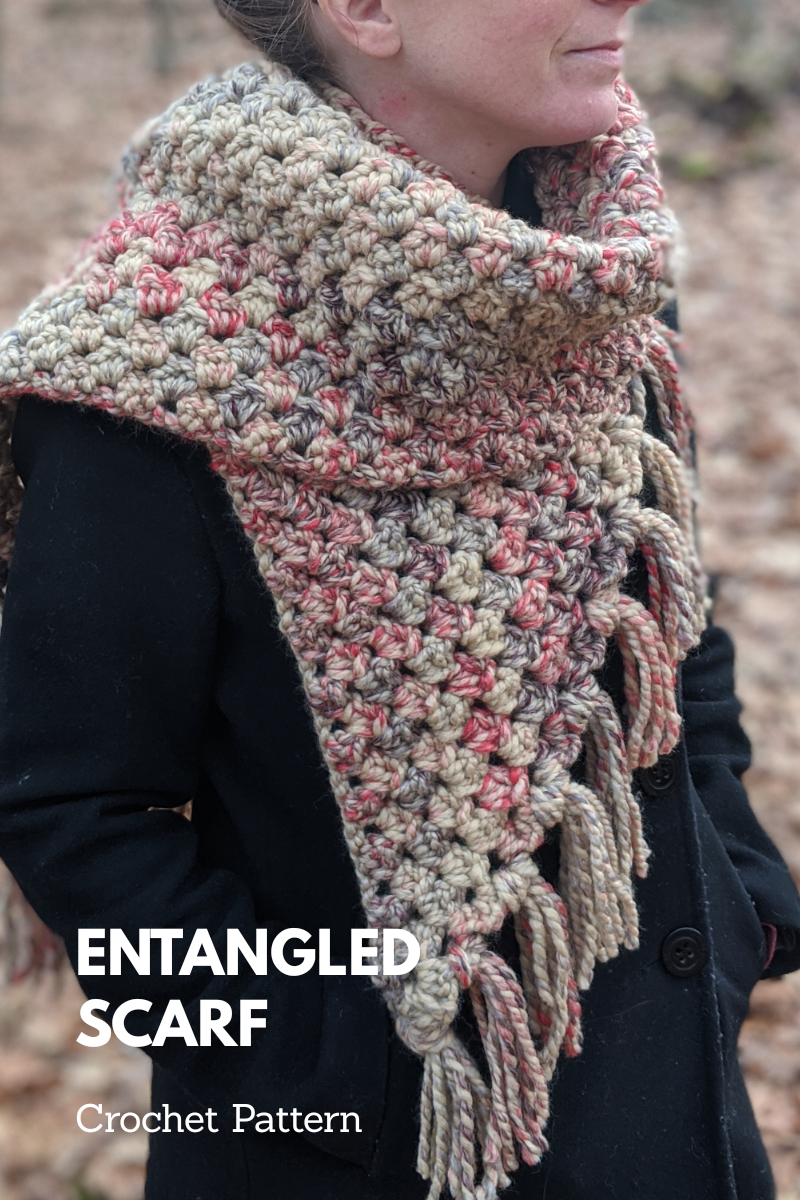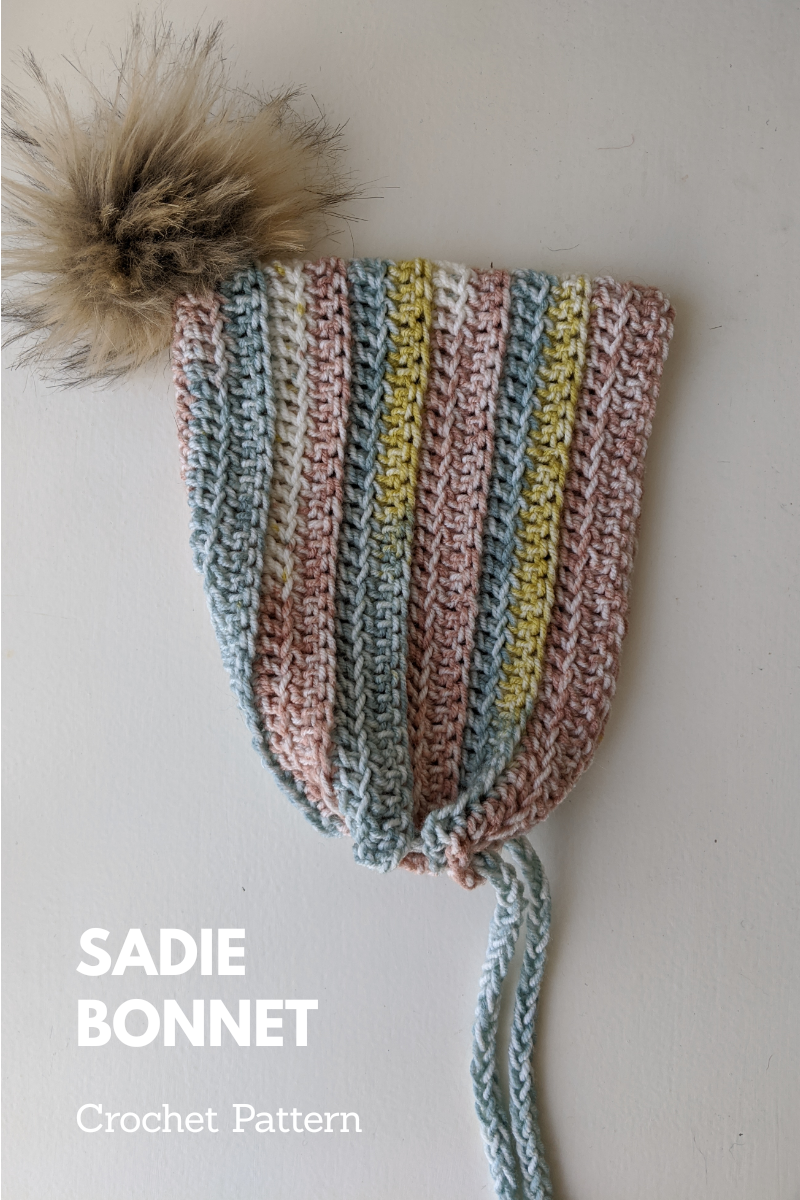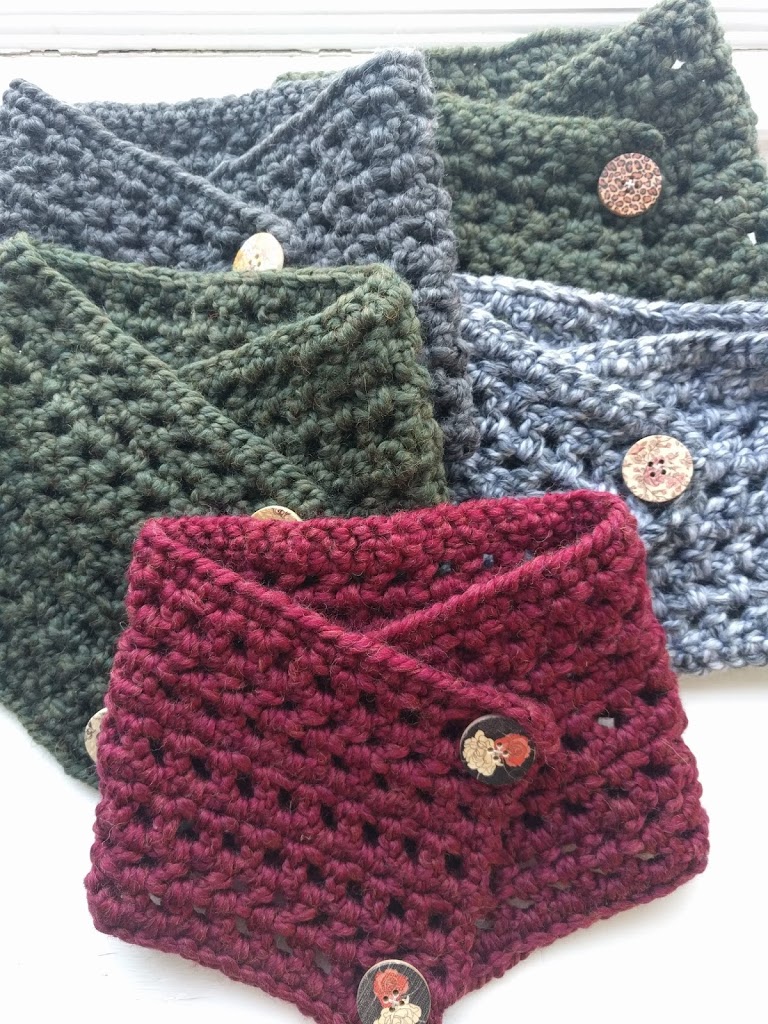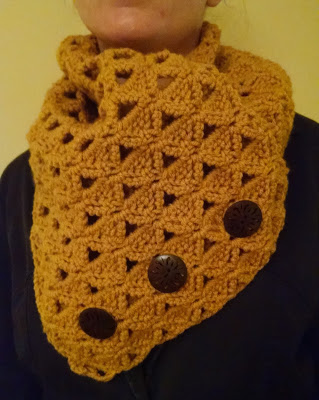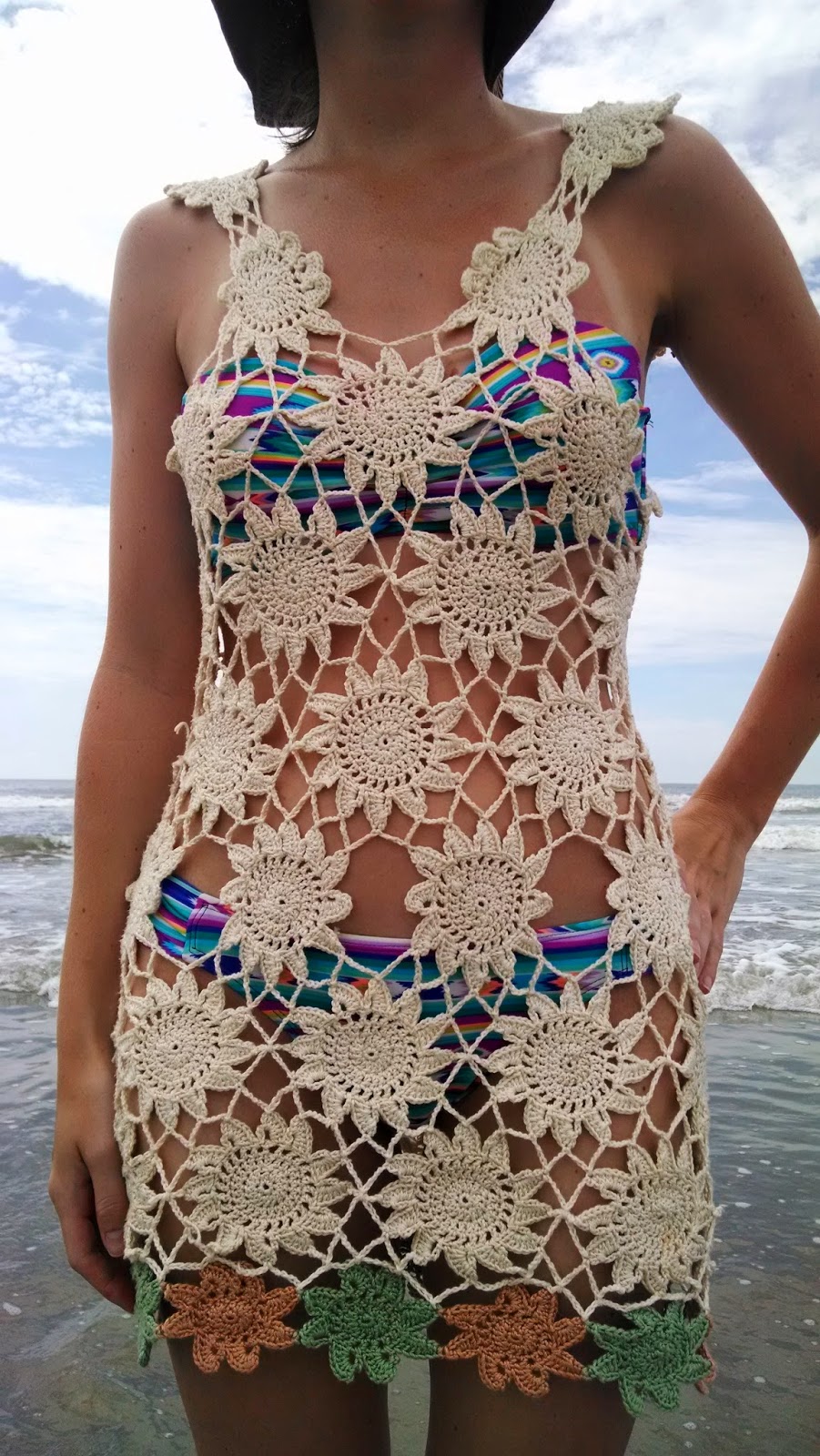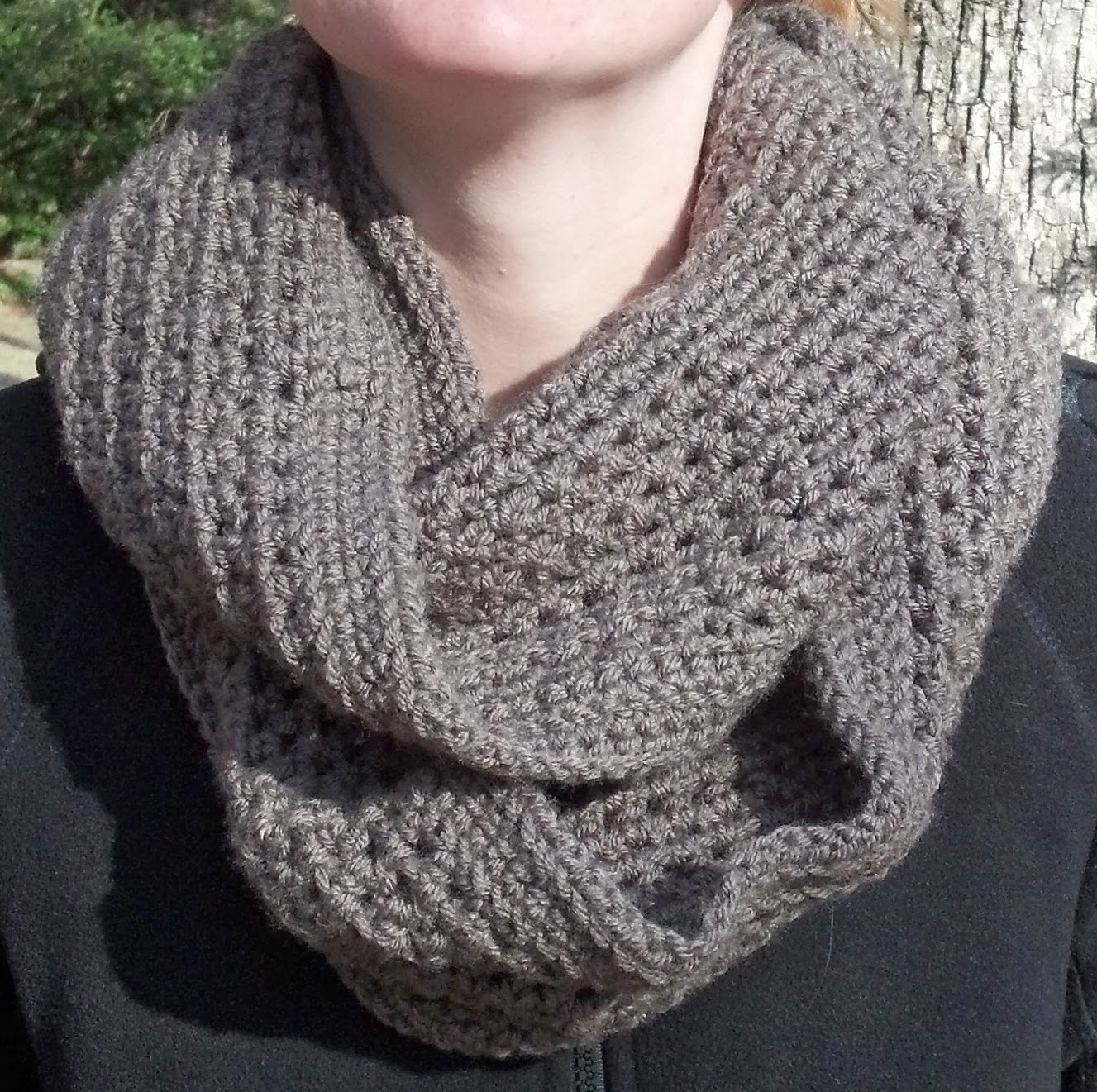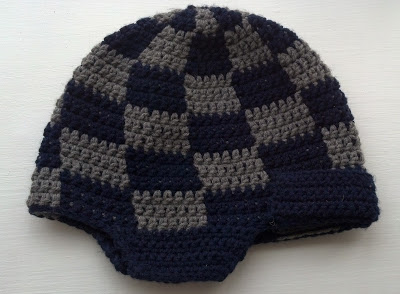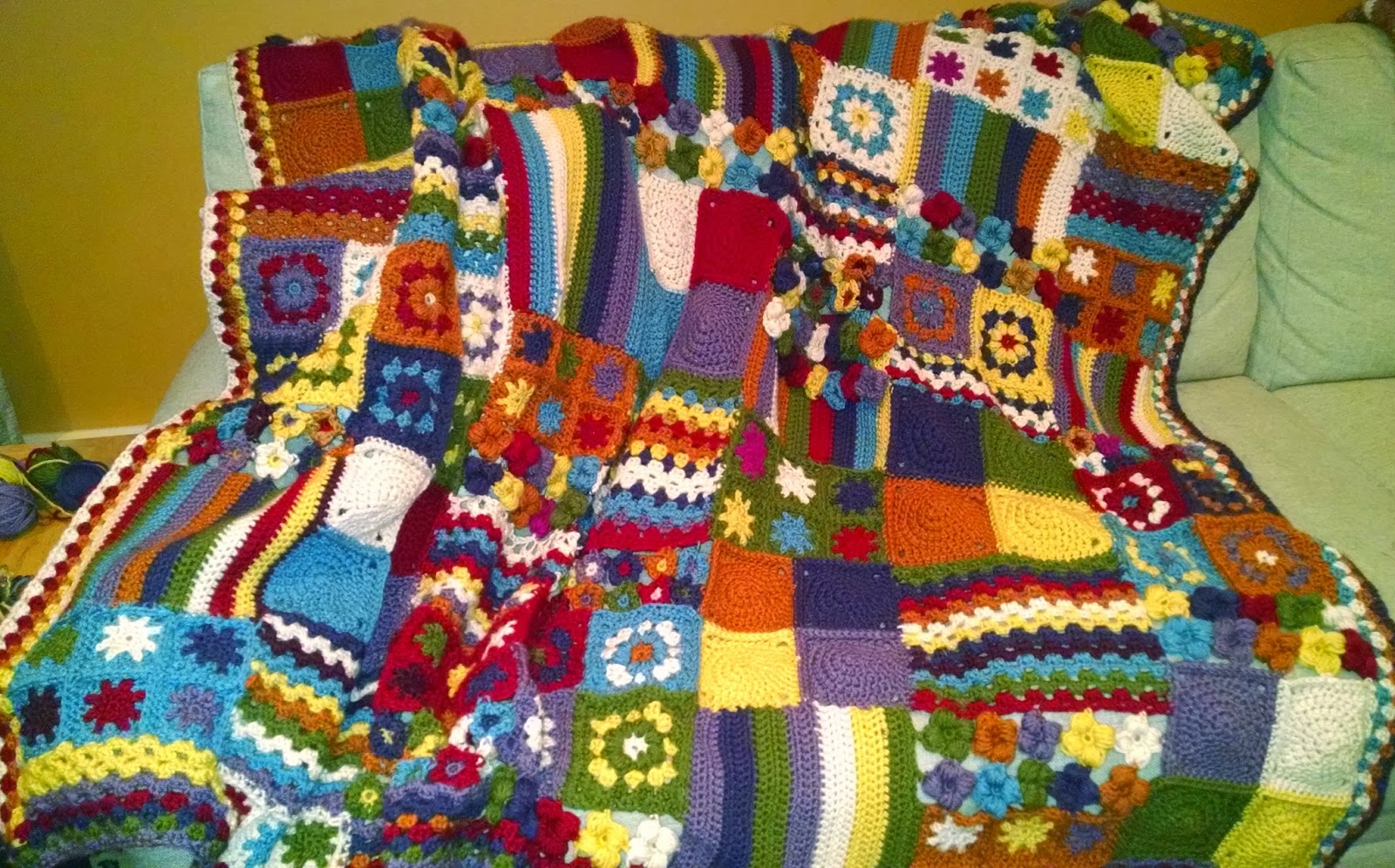
I was inspired by this blanket from a Pinterest pic that I think is (was) from Anthropologie at one point in time.

Materials:
3 skeins Vanna’s Choice in Purple
3 skeins Vanna’s Choice in Olive
3 skeins Vanna’s Choice in Rust
3 skeins Vanna’s Choice in Cranberry
3 skeins Vanna’s Choice in Dusty Blue
3 skeins Vanna’s Choice in Dusty Purple
3 skeins Vanna’s Choice in Beige
3 skeins Vanna’s Choice in Mustard
Size J crochet hook
Measurements:
Approximately 66 inches x 62 inches
Instructions:
Think of this as a blanket recipe rather than a complete pattern. There’s a semi-ordered randomness to this blanket that I absolutely love. Mix up the colors evenly throughout the blanket, but try not to overthink it too much!
Below are instructions for each section of the blanket. You can attach the sections however you want and here is a link to a helpful list of different methods to join your work. I think #4 “join as you go” is the best method for this blanket because you have a mixture of granny squares and lines of DCs and HDCs.
Star Patches:

Round 1: Using the magic loop method, 8 dc.
Round 2: *Ch 3, 1 sl st in 2nd ch from hook, 1 sl st in next ch, sl st in next dc.* Repeat from * to * until end so you have 8 points total. Sl st in first dc of Round 1.
Round 3: Change colors. Working in back loops only, sl st in ending sl st of Round 2, dc in same sl st, *ch 1, sl st in first sl st at the top of the point from Round 1, sc in second sl st of the point, dc in sl st from Round 2.* Repeat from * to * until you have worked 7 points, ch 1, sl st in first sl st at the top of the last point from Round 1, sc in second sl st of the point, sl st in beginning dc.
Round 4: Ch 1, *sc in ch 1 space, dc in next sc, (1 tr, ch 1, 1 tr) in next dc, dc in next ch 1 space, sc in next sc, sc in next dc.* Repeat from * to * until end, sl st in beginning ch.
Repeat this star patch five more times, with a 2×3 grid of the patches. I recommend making the stars all different colors and the border all the same color.
Puff Stitch Flowers:

I used the really helpful tutorial available here, but only started with 8 sc using the magic loop method to make 4 petals (instead of 6 petals on the website).
I made 10 flowers of all different colors in a section in a 2×5 grid.
Vertical Lines:
This section is a good filler space to connect an awkwardly shaped section end (like the puff stitch flowers) with a flat section.
Round 1: Sl st in the corner of the previous section, ch 27 perpendicular from the previous section.
Round 2: Turn, ch 2, 1 dc in each ch across, sl st in previous section.
Repeat Round 2 until you fill the section space. Change colors every couple of rows.
Circle Center Granny Square:

Round 1: Using magic loop method, 8 dc.
Round 2: Ch 2 (counts as dc), 1 dc in first st, *2 dc in next st.* Repeat from * to * until end, sl st in starting ch.
Round 3: Ch 2 (counts as dc), 1 dc in first st, 1 dc in next st, *2 dc in next st, 1 dc in next st.* Repeat from * to * until end, sl st in starting ch.
Round 4: Ch 2 (counts as dc), 1 dc in first st, 1 dc in next 2 sts, *2 dc in next st, 1 dc in next 2 sts.* Repeat from * to * until end, sl st in starting ch.
Round 5: Ch 1, 1 sc in next 2 sts, 1 dc in next 2 sts, (1 tr, ch 2, 1 tr) in next st, *1 dc in next 2 sts, 1 sc in next 3 sts, 1 dc in next 2 sts, (1 tr, ch 2, 1 tr) in next st.* Repeat from * to * until end, 1 sc in last st, sl st in starting ch.
Round 6: Ch 2, 1 dc in next 4 sts, *(2 dc, ch 1, 2 dc) in ch 2 space, 1 dc in next 9 sts.* Repeat from * to * until end, 1 dc in next 4 sts, sl st in starting ch.
Repeat three more times in different colors for four squares total per section in a 2×2 grid.
Multi Colored Flowers:

Round 1: Using magic loop method, 10 sc.
Round 2: Change colors. Ch 1 (counts as sc), 2 dc in first st, sl st in next st, *3 dc in next st, sl st in next st.* Repeat from * to * until end, sl st in starting ch. 5 petals total.
Make 12 flowers total for a section with a 2×6 grid.
Granny Cluster Stripes:
Like the vertical lines, this is another good filler section to make your sections even at the end. If you’re joining with a section that doesn’t have a straight edge, like the multi colored flowers or the puff stitch flowers, start with a chain row running across the whole section and connected to the previous section.
Round 1: Turn, ch 2 (counts as first hdc), 2 hdc in ch space, *ch 2, skip 2 sts, 3 hdc in next st.* Repeat from * to * until end, 1 hdc as ending st.
Repeat Round 1 until you fill in the section and change colors every couple of rows.
Daisy Granny Squares:

There’s a helpful tutorial available here.
Make 4 squares total for a section with a 2×2 grid.
Edging:
Once you have made the blanket to your desired length, the edging is very simple. Sl st in a corner, ch 2, 2 dc in first st, *skip 2 sts, 3 dc in next st.* Repeat from * to * until end.
I alternated colors so each side had a different color and I worked 4 rows of edging.
My Recipe
I worked my blanket in vertical panels and tried to make sure each panel used at least one of each pattern section before repeating a pattern section. Below is how I organized mine, but feel free to improvise!
Panel 1: Multi Colored Flowers, Vertical Lines, Star Patches, Puff Stitch Flowers, Circle Center Granny Square, Granny Cluster Stripes, Daisy Granny Squares, Multi Colored Flowers, Vertical Lines, Star Patches
Panel 2: Circle Center Granny Square, Multi Colored Flowers, Vertical Lines, Star Patches, Puff Stitch Flowers, Granny Cluster Stripes, Daisy Granny Squares, Circle Center Granny Square, Granny Cluster Stripes, Star Patches
Panel 3: Multi Colored Flowers, Daisy Granny Squares, Granny Cluster Stripes, Circle Center Granny Square, Multi Colored Flowers, Vertical Lines, Star Patches, Puff Stitch Flowers, Granny Cluster Stripes, Star Patches, Multi Colored Flowers
Panel 4: Circle Center Granny Square, Multi Colored Flowers, Star Patches, Vertical Lines, Puff Stitch Flowers, Circle Center Granny Square, Granny Cluster Stripes, Multi Colored Flowers, Daisy Granny Squares, Puff Stitch Flowers
Panel 5: Circle Center Granny Square, Vertical Lines, Daisy Granny Squares, Granny Cluster Stripes, Multi Colored Flowers, Puff Stitch Flowers, Vertical Lines, Star Patches, Circle Center Granny Square, Vertical Lines
Panel 6: Granny Cluster Stripes, Multi Colored Flowers, Star Patches, Vertical Lines, Puff Stitch Flowers, Daisy Granny Squares, Granny Cluster Stripes, Circle Center Granny Square, Granny Cluster Stripes, Puff Stitch Flowers, Star Patches
Panel 7: Puff Stitch Flowers, Circle Center Granny Square, Granny Cluster Stripes, Star Patches, Vertical Lines, Multi Colored Flowers, Daisy Granny Squares, Puff Stitch Flowers, Circle Center Granny Square
There were some points where the panel ends did not line up when I went to do the ending, so I just did a few rows of the Granny Cluster Stripes until the panels all lined up.

